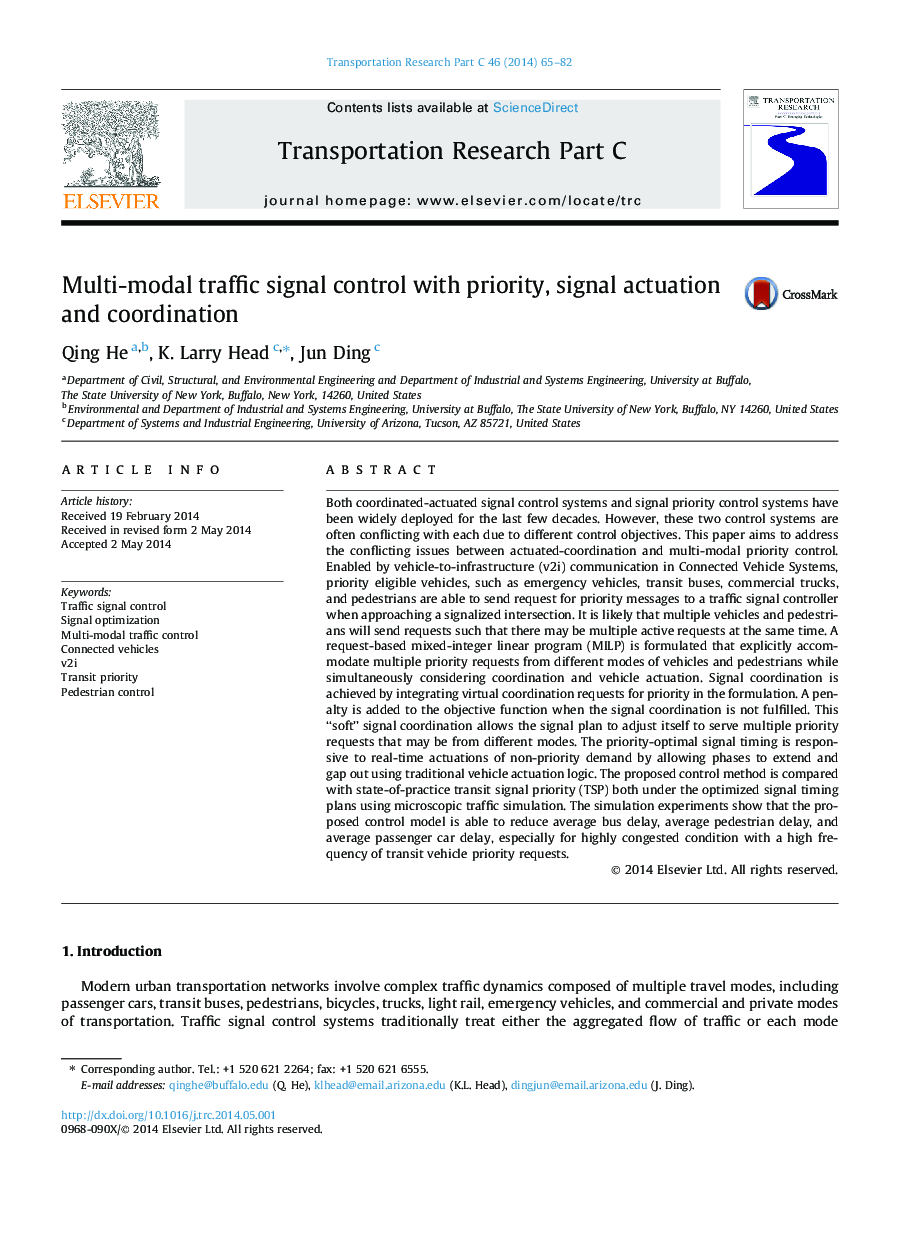| کد مقاله | کد نشریه | سال انتشار | مقاله انگلیسی | نسخه تمام متن |
|---|---|---|---|---|
| 6937080 | 868854 | 2014 | 18 صفحه PDF | دانلود رایگان |
عنوان انگلیسی مقاله ISI
Multi-modal traffic signal control with priority, signal actuation and coordination
ترجمه فارسی عنوان
کنترل سیگنال چند منظوره با اولویت، فعال شدن سیگنال و هماهنگی
دانلود مقاله + سفارش ترجمه
دانلود مقاله ISI انگلیسی
رایگان برای ایرانیان
کلمات کلیدی
موضوعات مرتبط
مهندسی و علوم پایه
مهندسی کامپیوتر
نرم افزارهای علوم کامپیوتر
چکیده انگلیسی
Both coordinated-actuated signal control systems and signal priority control systems have been widely deployed for the last few decades. However, these two control systems are often conflicting with each due to different control objectives. This paper aims to address the conflicting issues between actuated-coordination and multi-modal priority control. Enabled by vehicle-to-infrastructure (v2i) communication in Connected Vehicle Systems, priority eligible vehicles, such as emergency vehicles, transit buses, commercial trucks, and pedestrians are able to send request for priority messages to a traffic signal controller when approaching a signalized intersection. It is likely that multiple vehicles and pedestrians will send requests such that there may be multiple active requests at the same time. A request-based mixed-integer linear program (MILP) is formulated that explicitly accommodate multiple priority requests from different modes of vehicles and pedestrians while simultaneously considering coordination and vehicle actuation. Signal coordination is achieved by integrating virtual coordination requests for priority in the formulation. A penalty is added to the objective function when the signal coordination is not fulfilled. This “soft” signal coordination allows the signal plan to adjust itself to serve multiple priority requests that may be from different modes. The priority-optimal signal timing is responsive to real-time actuations of non-priority demand by allowing phases to extend and gap out using traditional vehicle actuation logic. The proposed control method is compared with state-of-practice transit signal priority (TSP) both under the optimized signal timing plans using microscopic traffic simulation. The simulation experiments show that the proposed control model is able to reduce average bus delay, average pedestrian delay, and average passenger car delay, especially for highly congested condition with a high frequency of transit vehicle priority requests.
ناشر
Database: Elsevier - ScienceDirect (ساینس دایرکت)
Journal: Transportation Research Part C: Emerging Technologies - Volume 46, September 2014, Pages 65-82
Journal: Transportation Research Part C: Emerging Technologies - Volume 46, September 2014, Pages 65-82
نویسندگان
Qing He, K. Larry Head, Jun Ding,
